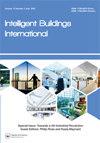提高智能建筑监控系统的有效性
IF 1.7
Q2 CONSTRUCTION & BUILDING TECHNOLOGY
引用次数: 0
摘要
现代建筑由BMS(楼宇管理系统)管理,BMS是一种控制其机械和电气设备的监控系统。故障和失灵的自动检测在智能建筑中电气设备的监控过程中起着至关重要的作用。将该功能集成在BMS中可以提高控制网络的一致性和有效性,并实时识别和报告系统故障。研究的重点是故障检测程序的定义,以验证控制和监控系统发出的顺序命令的成功执行。作者实现了一种实时控制和管理来自传感器的数据的工具,以验证命令的有效执行。该程序基于以下重要假设——我们必须能够将给定参考幅度的趋势与每个命令相关联。通过监测幅度的状态并将其与默认阈值进行比较,算法确定命令的执行。作者将所提出的策略应用于位于ENEA R.C.“La Casaccia”的F40大楼,以检测可追溯到可能的网络入侵或设备故障的故障和异常。本文章由计算机程序翻译,如有差异,请以英文原文为准。
Enhancing the smart building supervisory system effectiveness
ABSTRACT Modern buildings are managed by the BMS (Building Management System), a supervisory system that controls its mechanical and electrical devices. The automatic detection of faults and malfunctions plays a crucial role in the monitoring and control processes of electrical devices located in a smart building. The integration of this functionality within a BMS allows to improve the consistency and the effectiveness of the control network and to recognize and report in real-time the system’s malfunctioning. The research focuses on the definition of Fault Detection procedures to verify the successful implementation of sequential commands given by control and supervisory system. The authors realize a tool to control and manage in real-time the data coming from the sensors to verify the effective implementation of a command. The procedure is based on the following important assumption – we must be able to associate the trend of a given reference magnitude with each command. By monitoring the magnitude’s status and comparing them with default threshold values, the algorithms determine the command execution. Authors apply the proposed strategies on the F40 building, located in the ENEA R.C. ‘La Casaccia’, to detect faults and anomalies that can be traced to probable cyber intrusion or devices malfunctioning.
求助全文
通过发布文献求助,成功后即可免费获取论文全文。
去求助
来源期刊

Intelligent Buildings International
CONSTRUCTION & BUILDING TECHNOLOGY-
CiteScore
4.60
自引率
4.30%
发文量
8
 求助内容:
求助内容: 应助结果提醒方式:
应助结果提醒方式:


